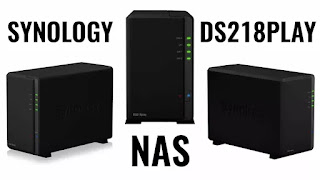How to Use Advanced IP Scanner to Scan IP and MAC Addresses and Identify Devices
To manage network devices efficiently, it’s essential to identify each device’s IP address and MAC address. One of the most convenient tools for this task is Advanced IP Scanner. In this post, we'll summarize the main features of Advanced IP Scanner, explain how to scan your network for devices, and show how to identify what each device is based on the scan results.
1. Key Features of Advanced IP Scanner
Advanced IP Scanner is a free, Windows-based tool that quickly scans your network and displays a list of all connected devices. Within seconds, users can see detailed information about each device on the same subnet.
- Scans IP and MAC addresses
- Displays device names (NetBIOS, DNS)
- Remote shutdown and Wake-On-LAN
- Access to shared folders, HTTP/FTP services
- Export results (CSV, HTML, etc.)
It’s especially useful for small business networks and home users. A portable version is also available for use without installation.
2. How to Scan IP and MAC Addresses
Follow these steps to scan IP and MAC addresses using Advanced IP Scanner:
- Download and run the tool from the official site (https://www.advanced-ip-scanner.com/).
- It will automatically detect your network range (e.g., 192.168.1.0 – 192.168.1.255).
- Click the “Scan” button. The software will search all IPs in the range.
- Once completed, it displays a table of results including IP, MAC, vendor, and device name.
The MAC address (Media Access Control) is the unique hardware identifier of a network interface and is vital for identifying specific machines.
3. How to Identify Devices from Scan Results
With multiple IPs listed, correctly identifying devices can be tricky. Here's how to match IPs with real-world devices:
1) Check MAC address and Manufacturer
- The first three bytes (OUI) of the MAC address identify the device vendor.
- For example, 00:1A:2B might be Cisco; 28:CF:E9 might be Xiaomi.
2) Look at the Device Name (Hostname)
- Often the computer name or router’s hostname is shown.
- If the name is unclear, consider renaming the device manually.
3) Analyze Services and Open Ports
- Check which services are active (e.g., HTTP, FTP, RDP).
- For instance, if port 80 is open and the vendor is Synology, it's likely a NAS.
Combining MAC info, hostnames, and open ports helps you reliably identify what each device is—printer, phone, PC, NAS, etc.
4. Tips and Best Practices
- Regular scans: Schedule periodic scans to detect new or unauthorized devices.
- Unknown MAC addresses: Could indicate an intruder or rogue device. Always monitor and log them.
- Wake-On-LAN: You can power on devices remotely using MAC, if BIOS and OS settings allow it.
Thanks to its user-friendly interface, Advanced IP Scanner is suitable even for non-technical users, offering fast network visibility and management.
Conclusion
Advanced IP Scanner is a powerful and free tool for discovering all devices on your network, including IP, MAC, name, and running services. It’s essential for asset tracking, troubleshooting, and securing your network. With just a few clicks, you gain a clear map of what’s connected and can act accordingly.
Accurately identifying your devices now will save time and confusion later when dealing with outages, conflicts, or security events.



